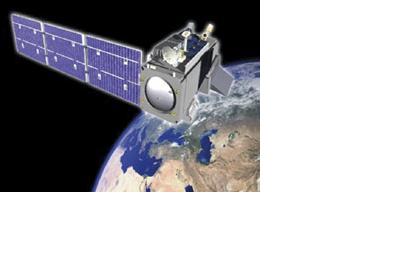Climate scientists warn that critical gaps in climate data could open up after the current generation of Earth-observation satellites comes to the end of its life, with the next generation nowhere near ready to take over.
The problem is exacerbated by the lack of an adequate replacement for a pair of Earth-observation satellites, the Orbiting Carbon Observatory and Glory, which failed on launch in the past two years.
Earth-observation programmes will fail to provide the data continuity required for climate science unless they are more adequately managed and supported, Kevin Trenberth, a senior researcher at the US National Center for Atmospheric Sciences in Boulder, Colorado, told the World Climate Research Programme conference in Denver, Colorado, this week. "We cannot manage what we can't measure," he says.
Time gap
The US Earth Observing System run by NASA comprises polar-orbiting and low-inclination satellites that make long-term global observations of the land surface, biosphere, atmosphere and oceans. The polar-orbiting satellites Terra, Aqua and Aura will probably shut down in 2015, and the next generation of polar-orbiting satellites is unlikely to be fully deployed by then. The lack of temporal overlap will have serious consequences for the homogeneity and continuity of climate data sets, Trenberth and eight co-authors state in a white paper submitted to the meeting.
On 28 October, NASA is set to launch the National Polar-orbiting Operational Environmental Satellite System Preparatory Project, a prototype of the new generation of satellites, Joint Polar Satellite System (JPSS), that will be the backbone of US space-based weather and climate observations. But owing to budgetary constraints, the first fully operational satellite of the JPSS, originally planned for launch in 2015, has been delayed until later in the decade.
As observing systems change from one generation of satellites to the next, adequate overlap between missions is required for testing, adjusting and calibrating new sensors. The possible two-year gap in coverage due to the delayed launch of the JPSS, says Trenberth, will cause critical discontinuity in observational records vital for monitoring global climate trends.
Data quality
Without the ability to calibrate the instruments on different systems, it becomes much harder to compare data between the two – something that is already a problem for many researchers, says Trenberth. Space-based climate observations are notoriously prone to bias. Trenberth points to disconcerting discrepancies and spurious variations in records, including those of precipitation and solar radiation, derived from different satellite sensors.
"You really need to know the limitations of the data you're working with," he says. "Satellite data have many merits and you can do a lot of tremendous science with them. But there are also many spurious signals in the data record which scientists must beware of treating as if they represented climate changes in the real world."
Trenberth says that the climate monitoring principles set by the Global Climate Observing System (GCOS), the lead international organization for oversight of systematic climate observations, lack provisions for verifying accuracy and confirming or refuting "surprising" climate-change results based on satellite data.
Data-quality issues, including the reanalysis and reprocessing of past observations, have become a topic in its own right in climate research, says Adrian Simmons, a senior scientist at the European Centre for Medium-Range Weather Forecasts in Reading, UK, and chairman of the GCOS steering committee.
Although concerns about data gaps and uncritical data use are real, they don't compromise basic findings, including the fact that the world is warming, he says. "But we do encourage space agencies and satellite groups to make sure that all data sets come as research-friendly, and with as much information on uncertainty, as possible."

